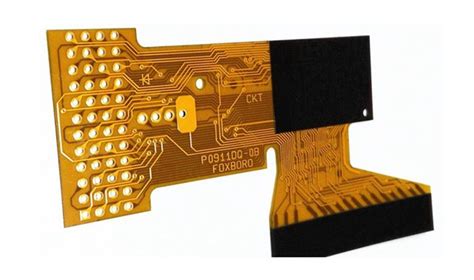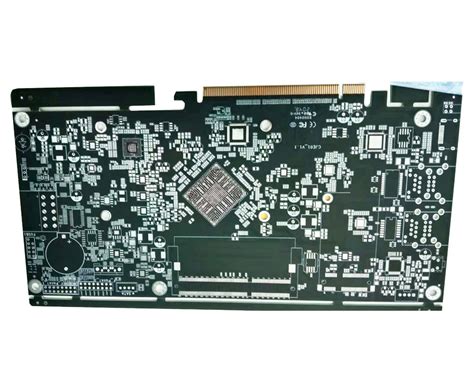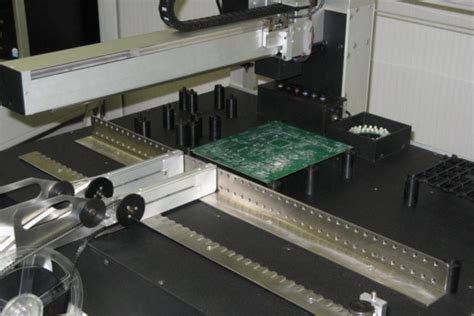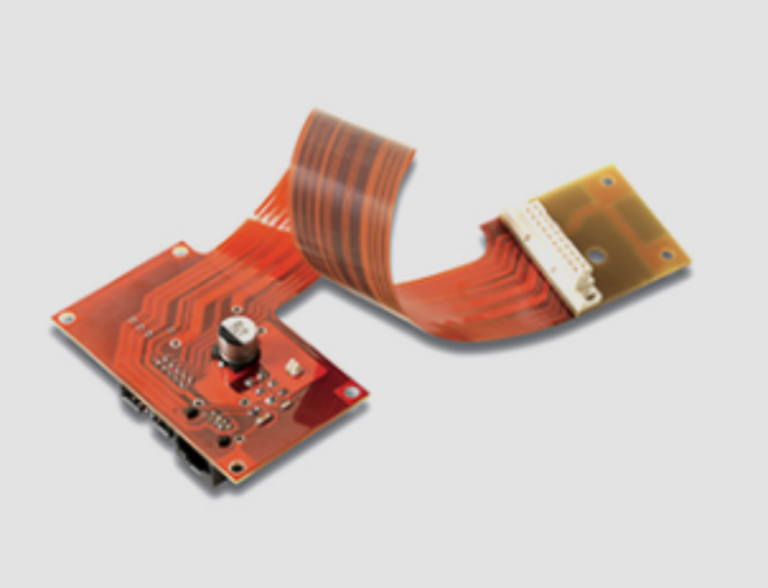EMS Circuit Board: A Comprehensive Overview of Electronics Manufacturing Services
Introduction
Electronics Manufacturing Services (EMS) have become an integral part of the global electronics industry, providing end-to-end solutions for the design, manufacturing, testing, and distribution of electronic products. At the heart of these services lies the EMS circuit board, which serves as the foundation for assembling electronic components into functional devices. EMS providers offer a wide range of services, from PCB fabrication and assembly to supply chain management and after-sales support, enabling original equipment manufacturers (OEMs) to focus on innovation and market expansion.
This article provides a comprehensive overview of EMS circuit boards, covering the key services offered by EMS providers, the benefits of outsourcing to EMS companies, the challenges faced in EMS, and the future trends shaping the industry.

Key Services Offered by EMS Providers
EMS providers offer a wide array of services that cover the entire lifecycle of electronic products. Below are the key services typically provided by EMS companies:
- PCB Design and Layout:
- Schematic Design: EMS providers assist in creating schematic diagrams that outline the electrical connections between components.
- PCB Layout: The layout process involves placing components and routing traces on the PCB to ensure optimal performance, manufacturability, and reliability.
- Design for Manufacturability (DFM): EMS providers ensure that the PCB design is optimized for manufacturing, reducing the risk of defects and improving yield rates.
- PCB Fabrication:
- Material Selection: EMS providers select the appropriate materials (e.g., FR-4, high-frequency laminates) based on the application and performance requirements.
- Layer Stackup: The layer stackup is designed to meet the electrical and mechanical requirements of the PCB.
- Manufacturing Processes: EMS providers handle the entire fabrication process, including etching, drilling, plating, and lamination.
- Component Sourcing and Procurement:
- Supplier Management: EMS providers manage relationships with component suppliers to ensure timely and cost-effective procurement.
- Component Selection: EMS providers assist in selecting components based on performance, availability, and cost considerations.
- Supply Chain Management: EMS providers manage the supply chain to ensure the availability of components and minimize lead times.
- PCB Assembly:
- Surface-Mount Technology (SMT): EMS providers use automated SMT processes to place and solder surface-mount components onto the PCB.
- Through-Hole Technology (THT): For through-hole components, EMS providers use manual or automated insertion and soldering processes.
- Mixed Technology: EMS providers handle boards that require both SMT and THT components, ensuring seamless integration.
- Testing and Quality Assurance:
- In-Circuit Testing (ICT): EMS providers perform ICT to verify the electrical performance of individual components and connections.
- Functional Testing: Functional testing ensures that the assembled PCB operates as intended, meeting the specified performance criteria.
- Environmental Testing: EMS providers conduct environmental tests (e.g., thermal cycling, humidity testing) to ensure the reliability of the PCB under various conditions.
- Box Build and System Integration:
- Enclosure Assembly: EMS providers assemble the PCB into enclosures, integrating mechanical and electrical components.
- Cable and Harness Assembly: EMS providers assemble and install cables and harnesses to connect the PCB to other system components.
- System Integration: EMS providers integrate multiple PCBs and subsystems into a complete electronic device.
- After-Sales Support:
- Repair and Rework: EMS providers offer repair and rework services to address any issues that arise after the product has been deployed.
- Warranty Management: EMS providers manage warranty claims and provide support for defective products.
- Field Service: EMS providers offer field service support, including installation, maintenance, and troubleshooting.
Benefits of Outsourcing to EMS Providers
Outsourcing electronics manufacturing to EMS providers offers several benefits to OEMs, enabling them to focus on core competencies and achieve greater efficiency. Below are the key benefits of outsourcing to EMS providers:
- Cost Savings:
- Economies of Scale: EMS providers benefit from economies of scale, allowing them to offer lower per-unit costs for high-volume production.
- Reduced Capital Expenditure: Outsourcing eliminates the need for OEMs to invest in expensive manufacturing equipment and facilities.
- Labor Cost Savings: EMS providers often operate in regions with lower labor costs, reducing overall production costs.
- Access to Expertise:
- Technical Expertise: EMS providers have extensive experience and expertise in electronics manufacturing, ensuring high-quality and reliable products.
- Advanced Technology: EMS providers invest in state-of-the-art equipment and technologies, enabling them to handle complex and advanced PCB designs.
- Faster Time-to-Market:
- Streamlined Processes: EMS providers have streamlined processes and established supply chains, reducing lead times and accelerating production.
- Prototyping and NPI: EMS providers offer rapid prototyping and new product introduction (NPI) services, enabling OEMs to bring products to market faster.
- Focus on Core Competencies:
- Innovation and R&D: Outsourcing manufacturing allows OEMs to focus on innovation, research and development, and market expansion.
- Resource Allocation: OEMs can allocate resources more effectively, concentrating on design, marketing, and customer support.
- Risk Mitigation:
- Supply Chain Management: EMS providers manage the supply chain, reducing the risk of component shortages and supply chain disruptions.
- Quality Assurance: EMS providers implement rigorous quality assurance processes, reducing the risk of defects and ensuring product reliability.

Challenges in EMS
Despite the numerous benefits, EMS providers face several challenges that can impact their ability to deliver high-quality and cost-effective services. Below are the key challenges in the EMS industry:
- Supply Chain Disruptions:
- Component Shortages: The electronics industry is prone to component shortages, which can delay production and increase costs.
- Geopolitical Factors: Geopolitical factors, such as trade tensions and tariffs, can disrupt the supply chain and impact component availability.
- Quality Control:
- Defect Detection: Ensuring the detection and correction of defects during the manufacturing process is critical to maintaining product quality.
- Compliance: EMS providers must comply with industry standards and regulations, which can be complex and time-consuming.
- Technological Advancements:
- Rapid Technological Changes: The rapid pace of technological advancements requires EMS providers to continuously invest in new equipment and processes.
- Complex Designs: Increasingly complex PCB designs, such as those with high-density interconnects (HDIs) and advanced packaging, pose challenges for manufacturing.
- Cost Pressures:
- Price Competition: EMS providers face intense price competition, requiring them to continuously optimize costs while maintaining quality.
- Labor Costs: Rising labor costs in certain regions can impact the cost-effectiveness of outsourcing.
- Environmental and Regulatory Compliance:
- Environmental Regulations: EMS providers must comply with environmental regulations, such as RoHS (Restriction of Hazardous Substances) and REACH (Registration, Evaluation, Authorization, and Restriction of Chemicals).
- Sustainability: Increasing demand for sustainable manufacturing practices requires EMS providers to adopt eco-friendly processes and materials.
Future Trends in EMS
The EMS industry is evolving rapidly, driven by technological advancements, changing market demands, and the need for greater efficiency and sustainability. Below are the key trends shaping the future of EMS:
- Industry 4.0 and Smart Manufacturing:
- Automation and Robotics: The adoption of automation and robotics in manufacturing processes is increasing efficiency and reducing labor costs.
- IoT and Data Analytics: The integration of IoT (Internet of Things) and data analytics enables real-time monitoring and optimization of manufacturing processes.
- Advanced Packaging Technologies:
- 3D Packaging: The use of 3D packaging technologies, such as through-silicon vias (TSVs) and chip-on-wafer (CoW), is enabling higher performance and miniaturization.
- Heterogeneous Integration: The integration of different types of components (e.g., logic, memory, sensors) into a single package is driving innovation in EMS.
- Sustainability and Green Manufacturing:
- Eco-Friendly Materials: The use of eco-friendly materials and processes is becoming increasingly important in EMS.
- Circular Economy: The adoption of circular economy principles, such as recycling and reusing materials, is gaining traction in the industry.
- Supply Chain Resilience:
- Diversification: EMS providers are diversifying their supply chains to reduce the risk of disruptions and ensure component availability.
- Localization: The trend towards localized manufacturing is reducing lead times and improving supply chain resilience.
- Customization and Personalization:
- Mass Customization: The ability to offer customized and personalized products is becoming a key differentiator in the EMS industry.
- Flexible Manufacturing: Flexible manufacturing processes enable EMS providers to quickly adapt to changing customer demands.

Conclusion
EMS circuit boards are at the core of electronics manufacturing services, enabling the production of a wide range of electronic devices. EMS providers offer a comprehensive suite of services, from PCB design and fabrication to assembly, testing, and after-sales support, providing OEMs with the expertise and resources needed to bring high-quality products to market.
Outsourcing to EMS providers offers numerous benefits, including cost savings, access to expertise, faster time-to-market, and risk mitigation. However, EMS providers also face challenges, such as supply chain disruptions, quality control, and technological advancements, which require continuous innovation and adaptation.
As the EMS industry evolves, future trends such as Industry 4.0, advanced packaging technologies, sustainability, supply chain resilience, and customization are shaping the future of electronics manufacturing. By staying informed about these trends and leveraging the capabilities of EMS providers, OEMs can achieve greater efficiency, innovation, and competitiveness in the global electronics market.







